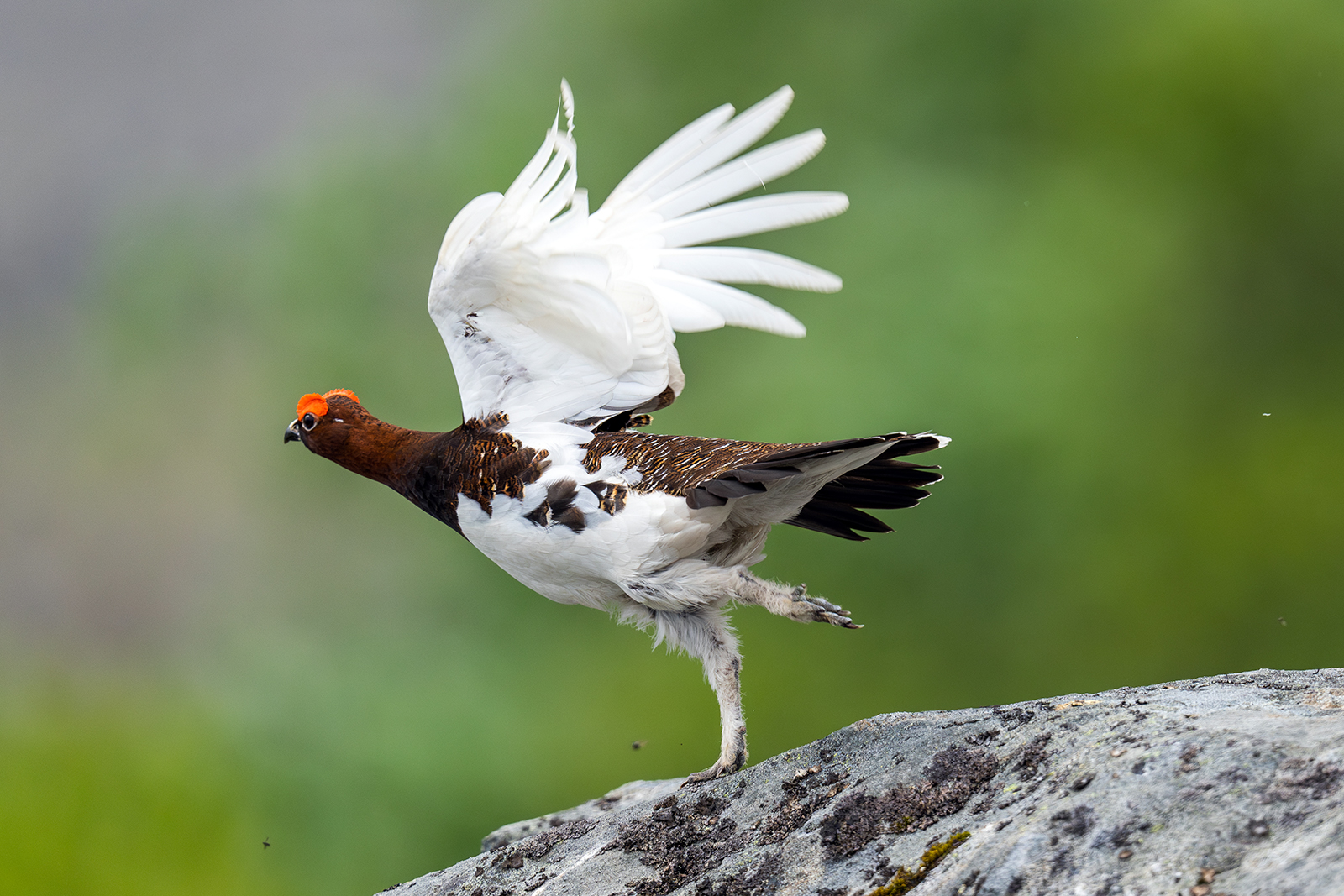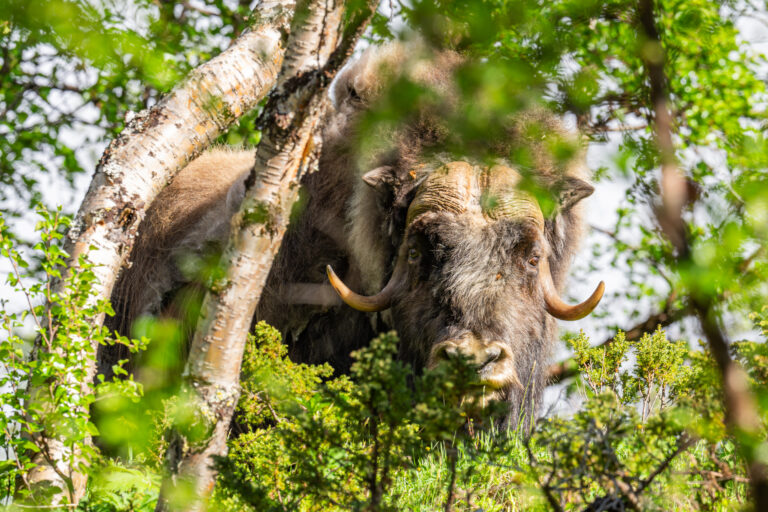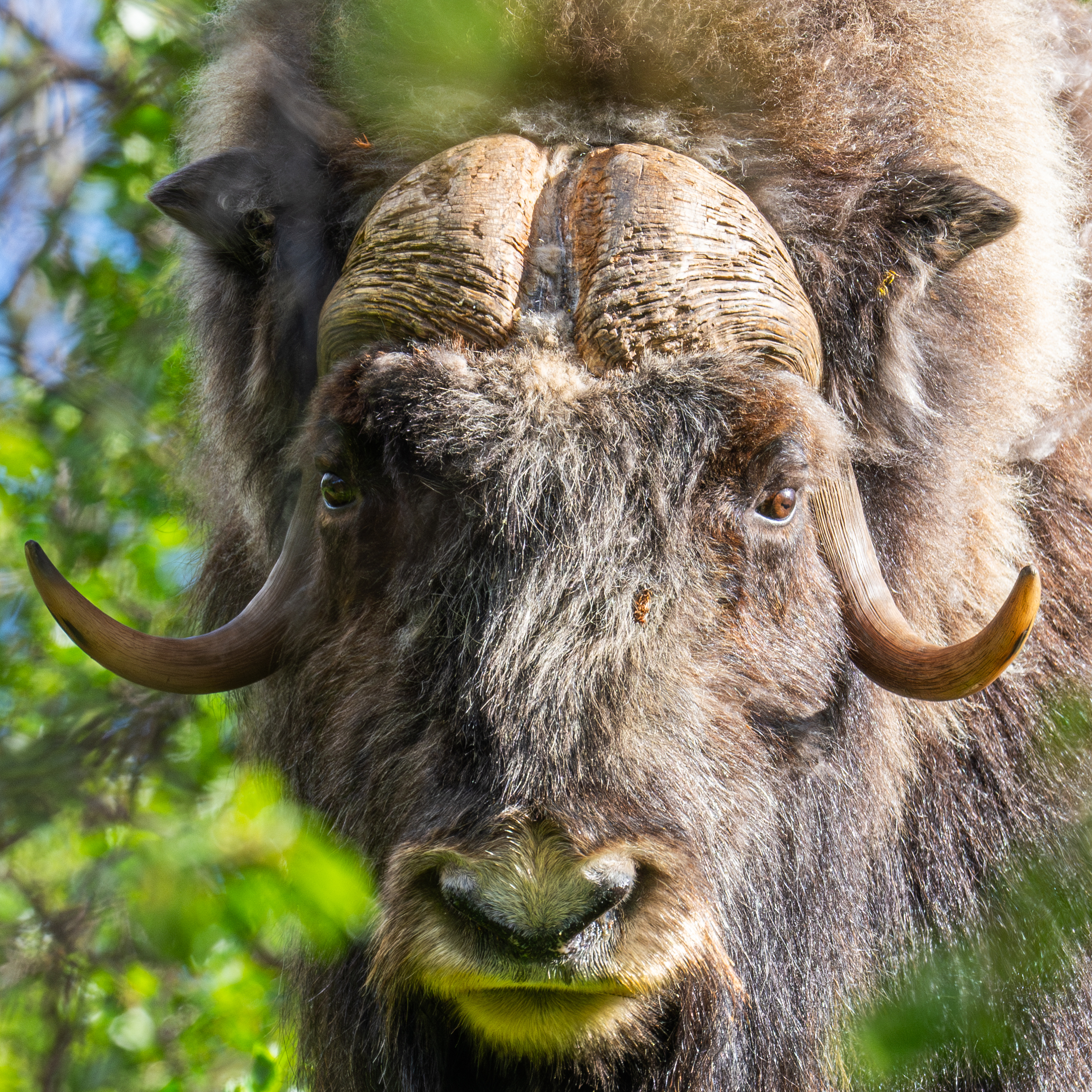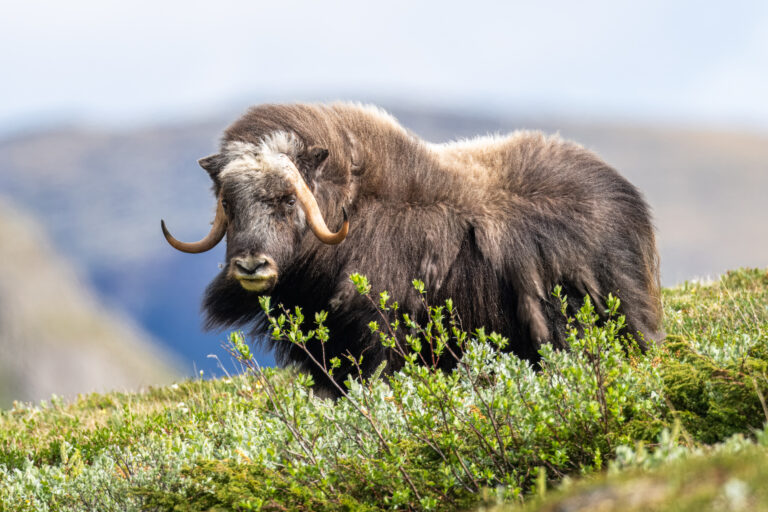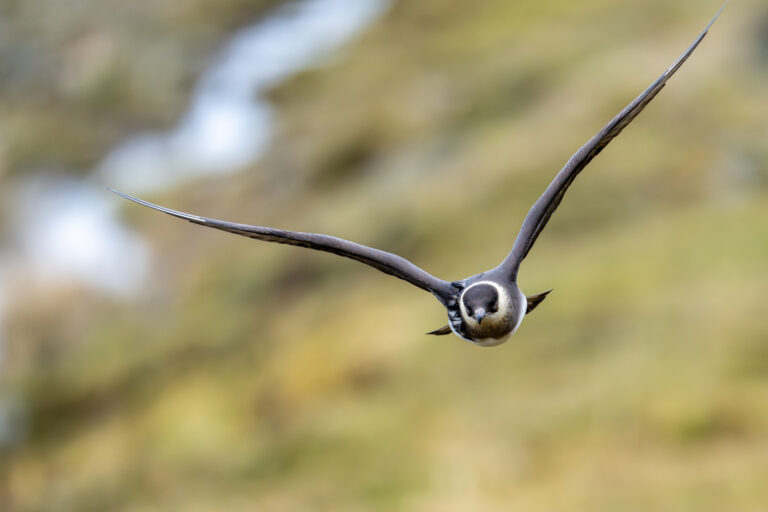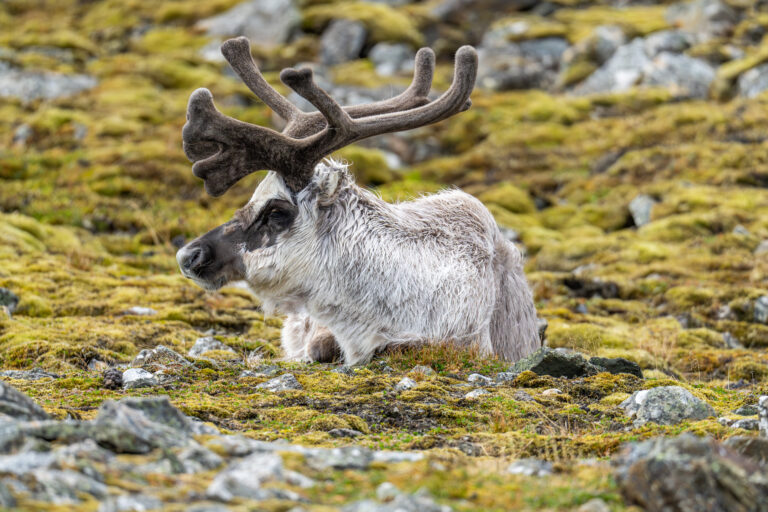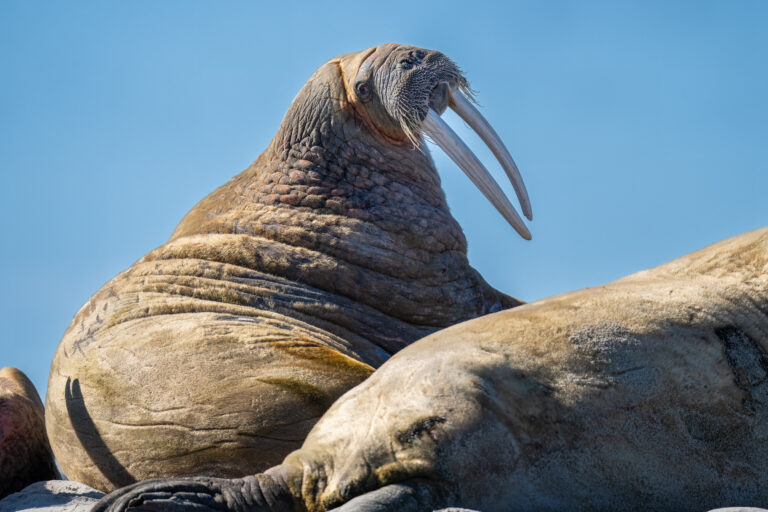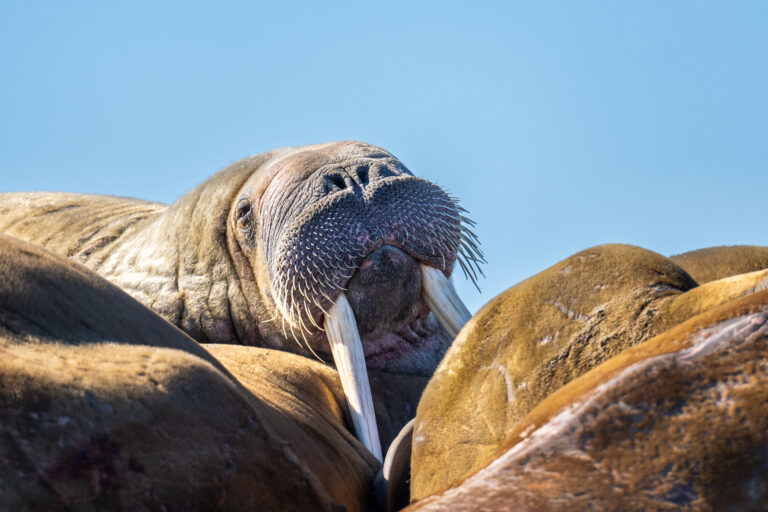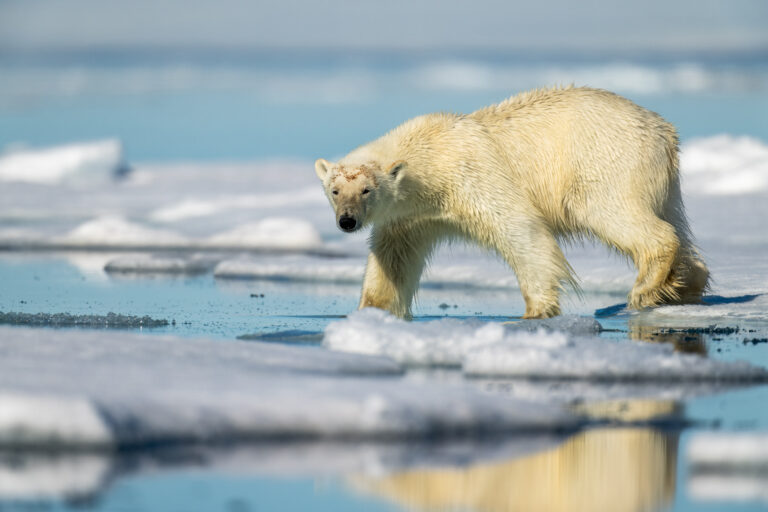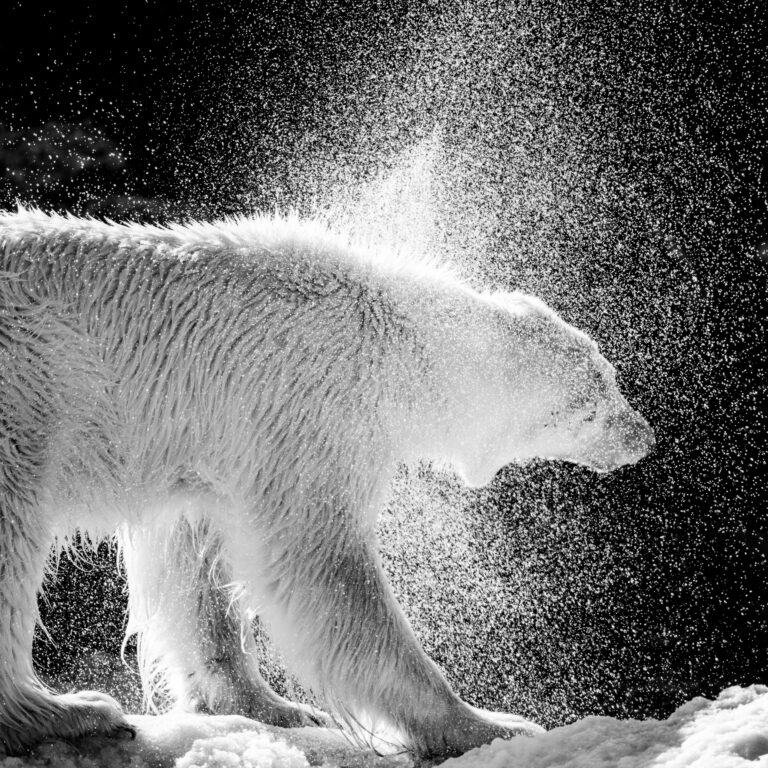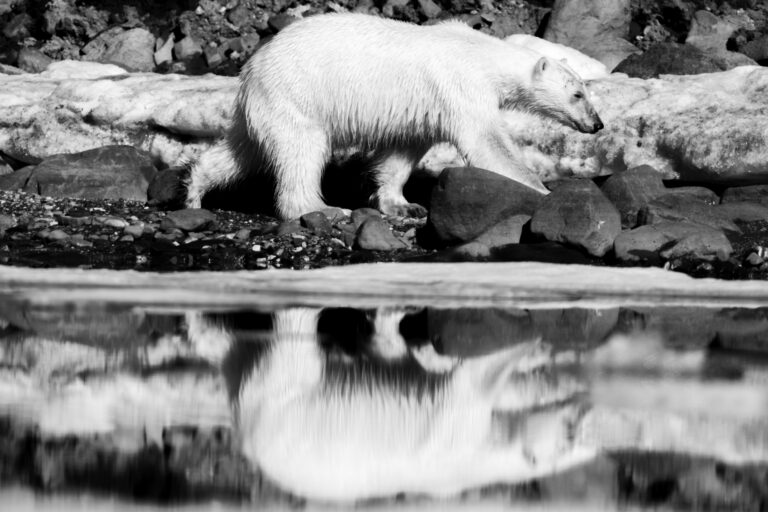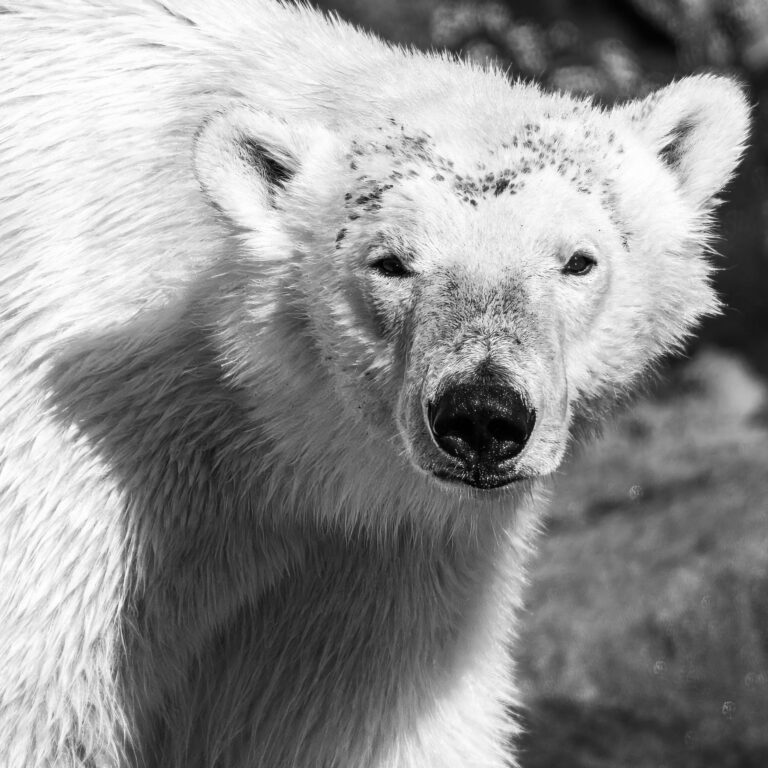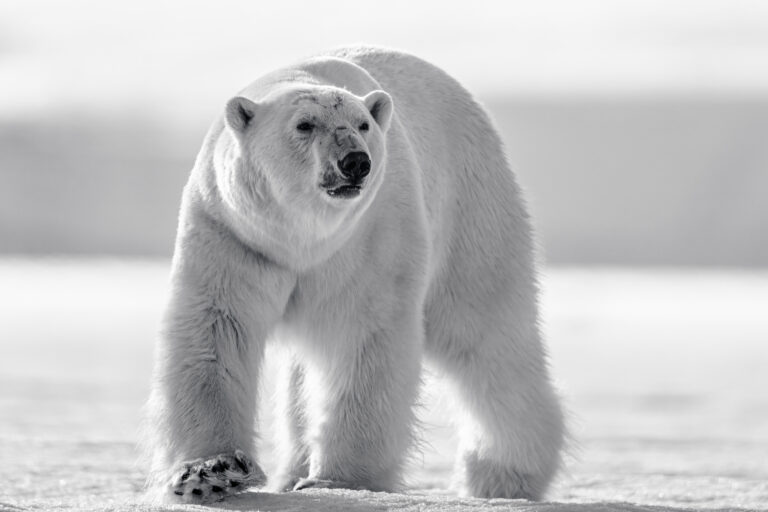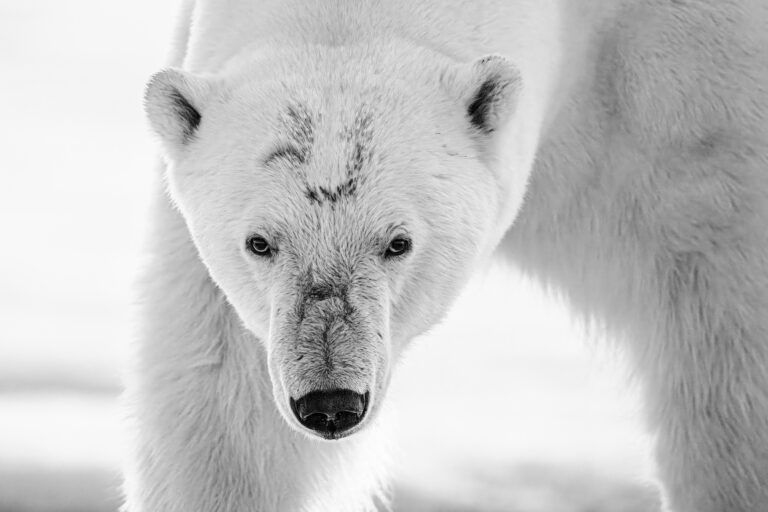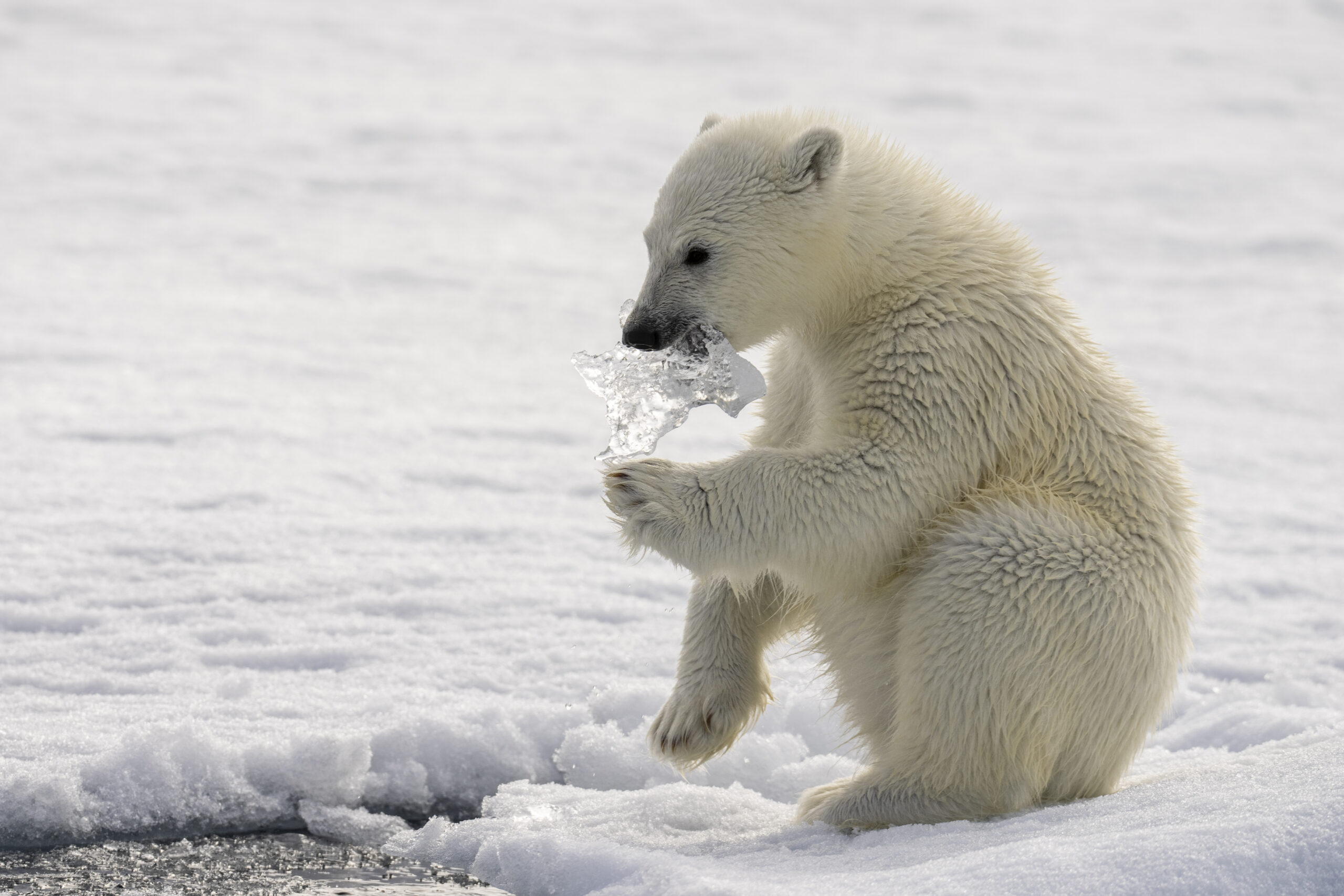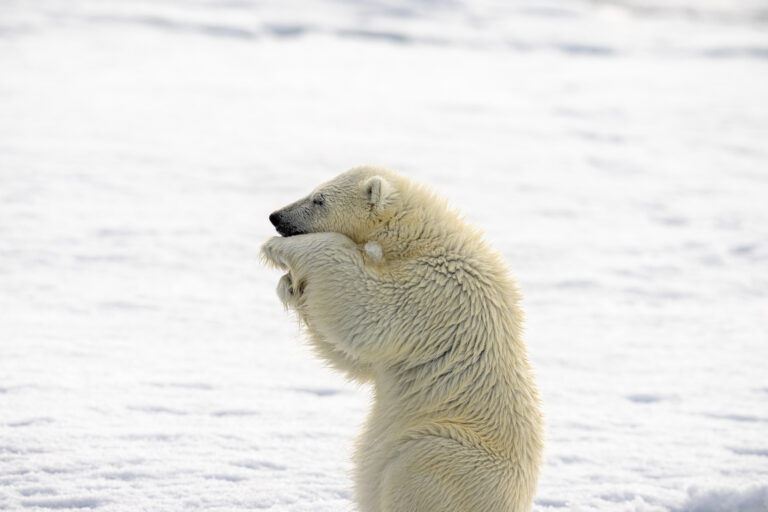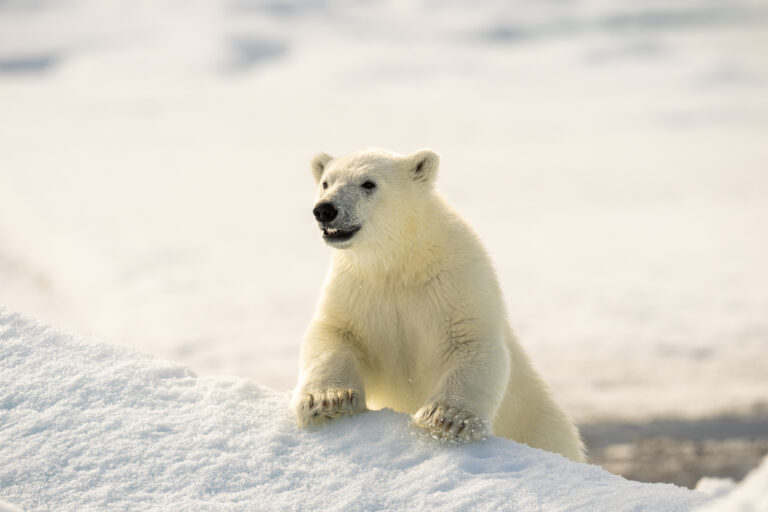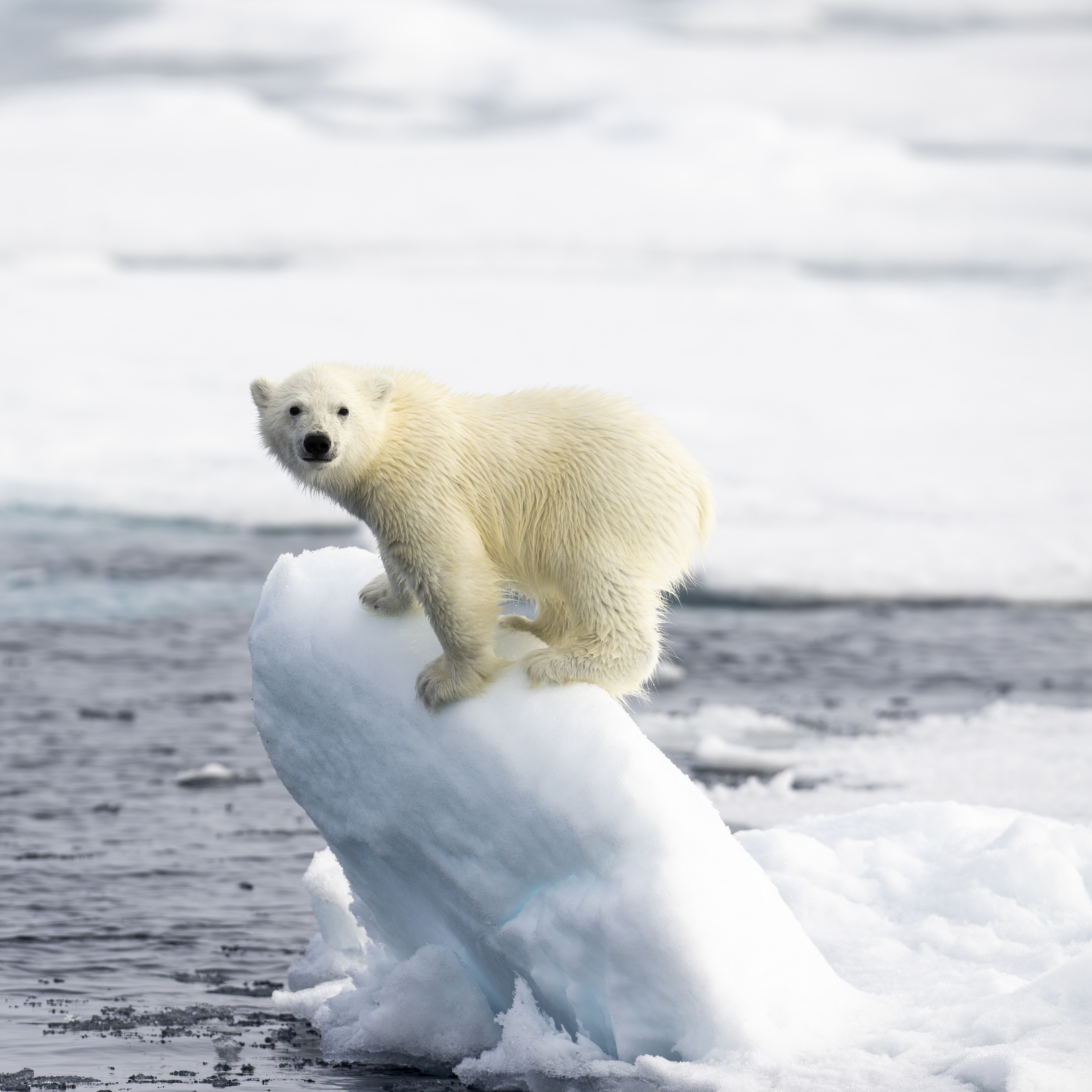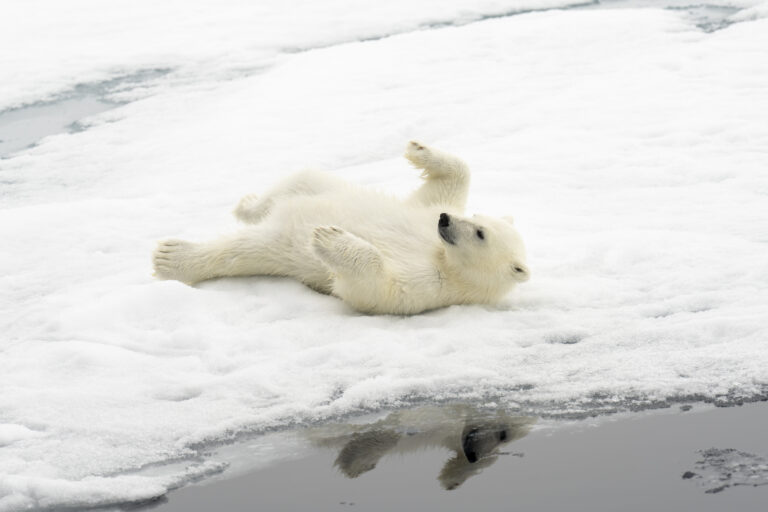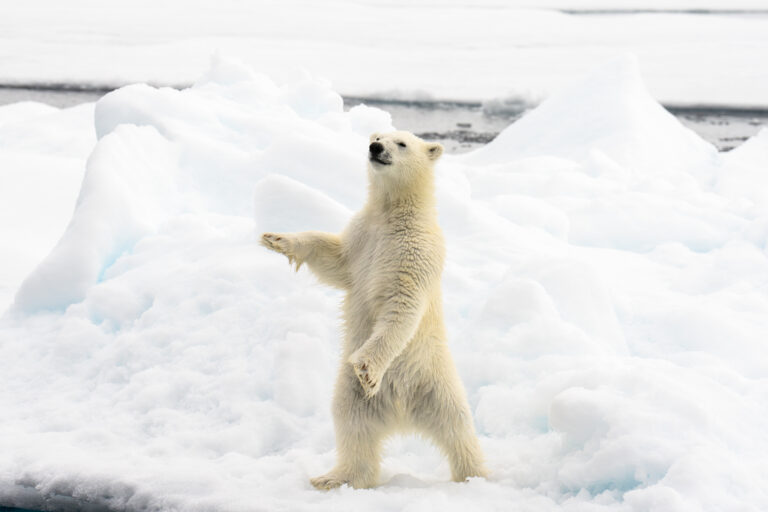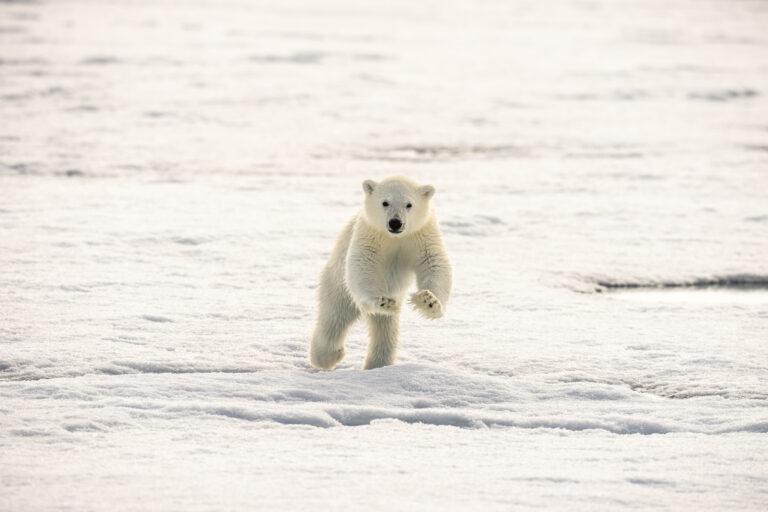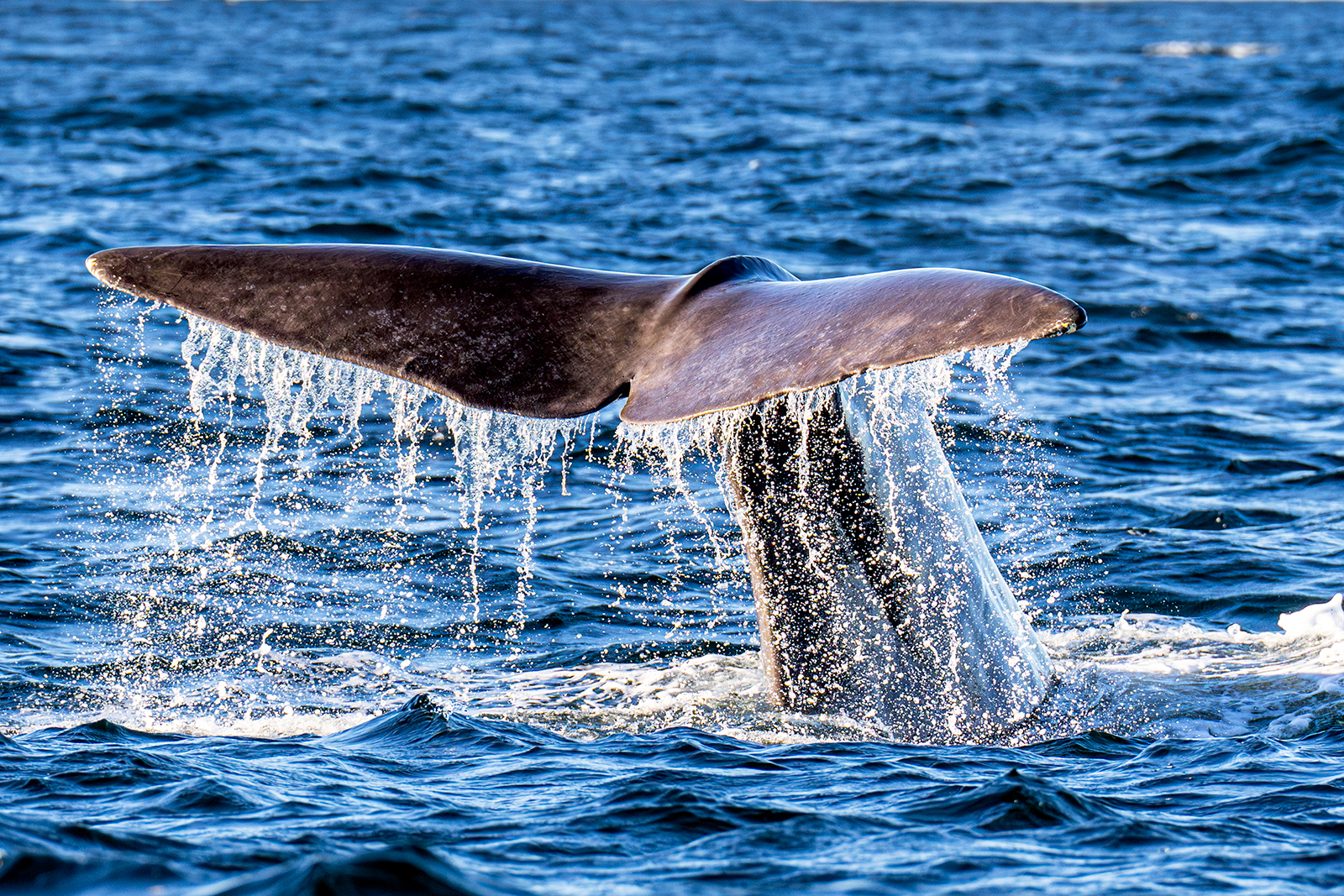
The Dive, Sperm Whale, north of Andenes, NorwayAfter having failed seeing sperm whales in spring (however therefore many pilot whales), I did return to Andenes end of September to give it another try. And indeed, being out again with the same scientists group as in spring, we did manage to hear and find sperm whales, about 15-18km out of Andenes, where the seefloor suddenly drops to more than 1,000m depth. And we got to see several sperm whales also showing us their beautiful flukes, which helped the scientists to identity the sperm whales and record their behaviour as well as moving patterns.
Of course, I would have appreciated if the whales would have decided to come even closer, but well, this is nature and ultimately the decision of the whale.
Of course, I would have appreciated if the whales would have decided to come even closer, but well, this is nature and ultimately the decision of the whale.
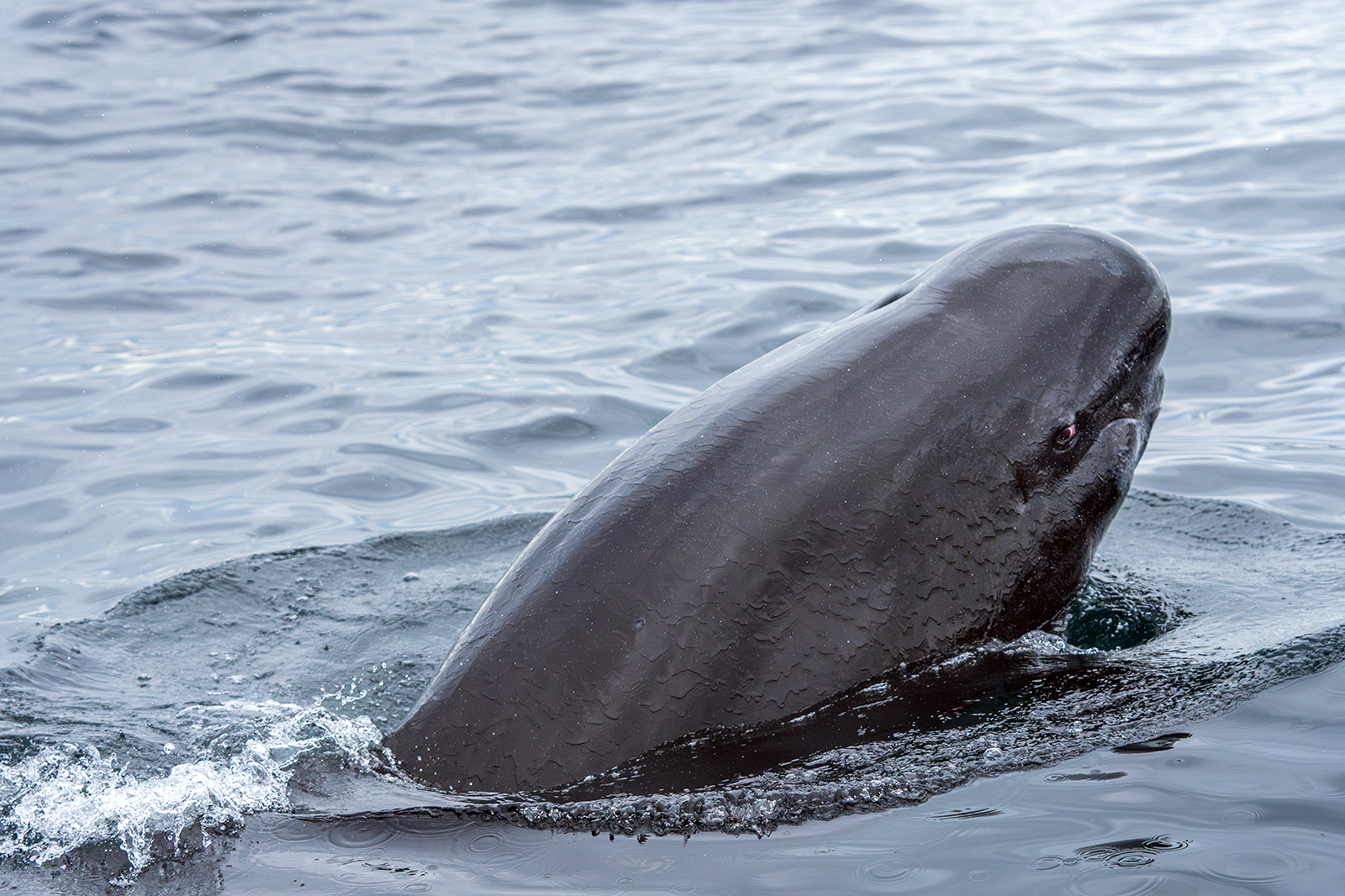
Curiosity, Pilot Whale, Andenes, NorwayAfter being out with researching biologists in RIBs to identify and photograph whales, we encountered a curious Pilot whale, which even came out of the water next to our boat to take a closer look at the people inside.
This photo was taken at 70mm focal length.
This photo was taken at 70mm focal length.
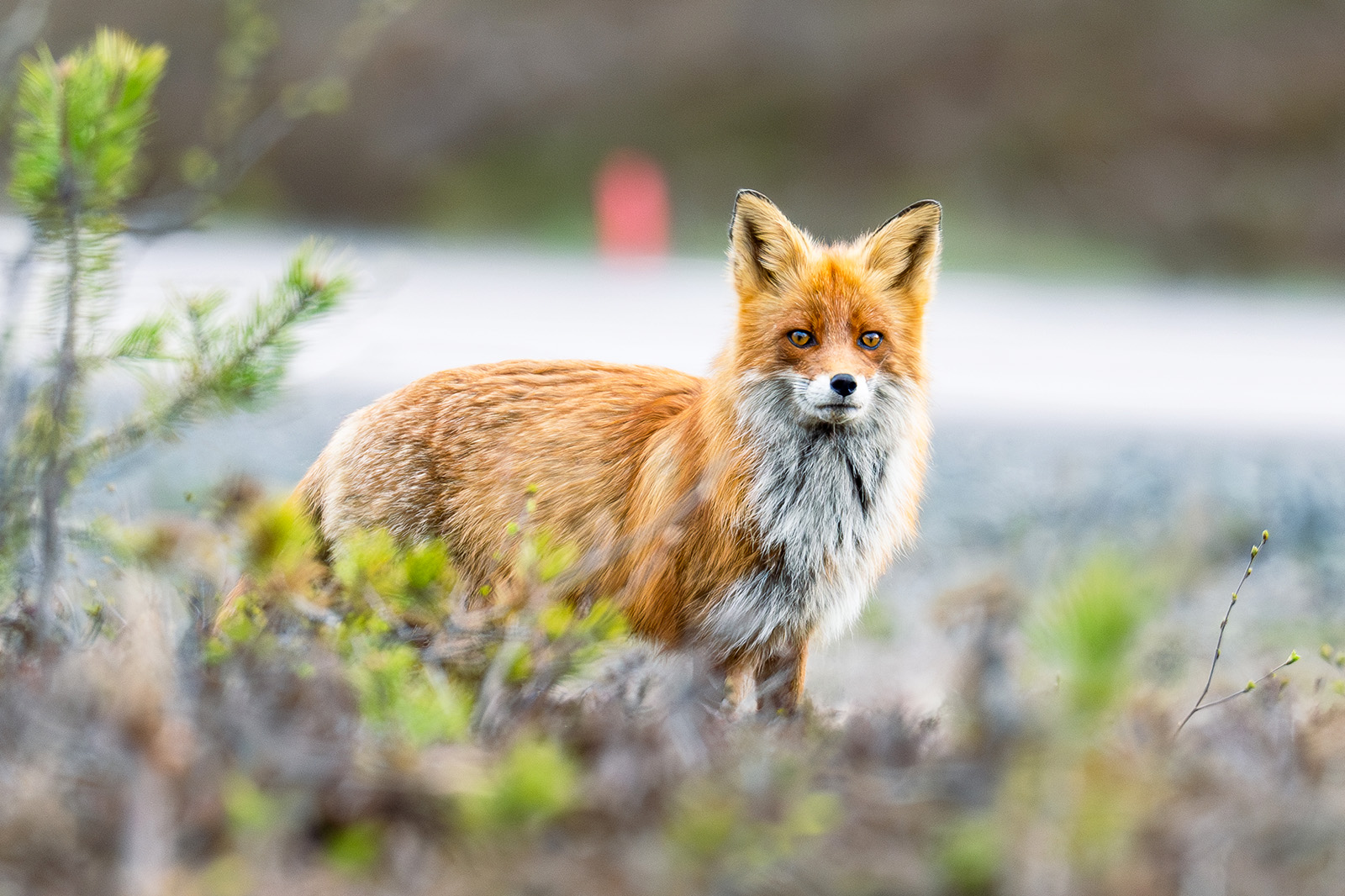
I see you, Red Fox, Sorsele, SwedenEarly morning in Sweden and just by coincidence when leaving our overnight sleeping location, I saw the most beautiful red fox, I have ever seen in my whole life.
The fox was looking for food and on its way to feast on a dead reindeer ('thanks' to the big wood trucks racing by) next to the road.
The fox was looking for food and on its way to feast on a dead reindeer ('thanks' to the big wood trucks racing by) next to the road.
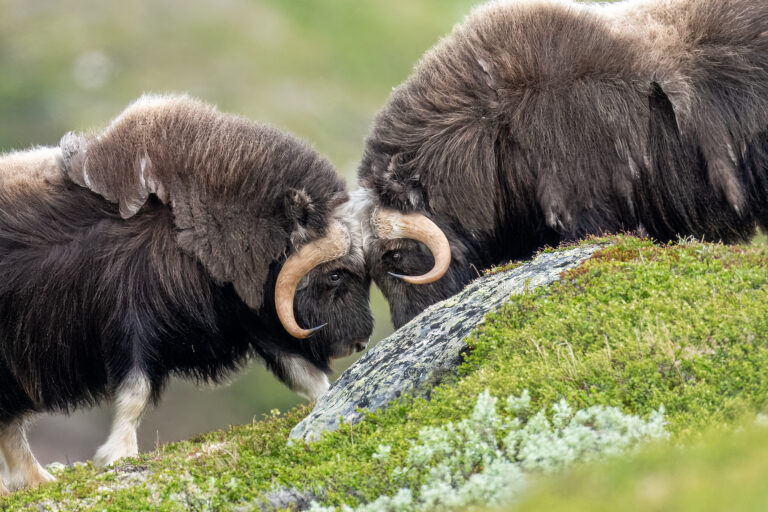
Musk oxes fighting, Dovrefjell National Park, NorwayIt is May and because of the unusually warm temperatures, most of the Musk oxes have already moved high up into the mountains. Longer exercise for us. After a few hours hike and a second breakfast rest for all of us, we saw a group of young Musk oxes in the distance practising pushing and fighting.
The winter fur is about to come off and partially hanging in long tufts from the back and side of the animals.
Lots of fur tufts can also be found hanging in bushes, where the oxes have moved through.
Locals are happily collecting those tufts, which they are using to produce excellent wool.
The winter fur is about to come off and partially hanging in long tufts from the back and side of the animals.
Lots of fur tufts can also be found hanging in bushes, where the oxes have moved through.
Locals are happily collecting those tufts, which they are using to produce excellent wool.

Svalbard Reindeer enjoying one of the last patches of snow, Longyearbyen, SvalbardEnd of June, only small patches of snow at the northern slopes of the hills have survived the long hours of daylight. Towards the warmer hours of the day, reindeers are seeking those snow patches to cool down and enjoy some crazy moves.
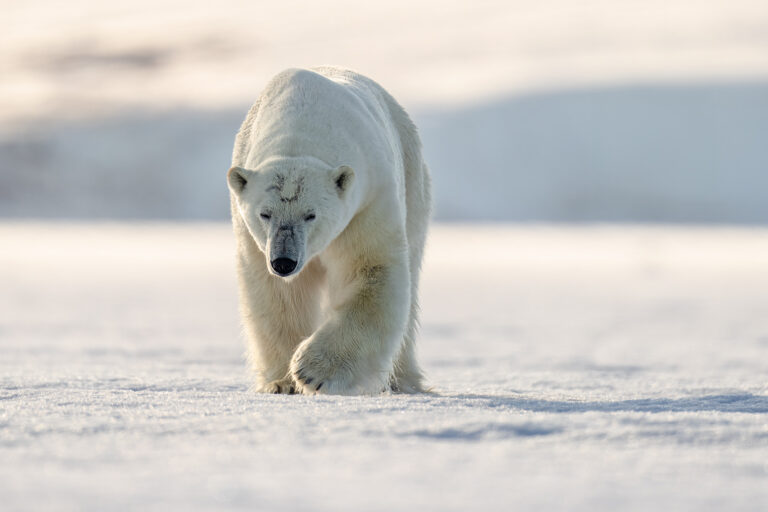
Large male polar bear in hunting approach, Brasvell glacier, SvalbardAfter having slept for quite some while much further out on the ice, this large male polar bear has apparently sniffed something interesting and is approaching his target. His movements might appear slow and relaxed, but are actually quite fast...and we need to prepare to move away with our RIBs to avoid an encounter, which would be way too close for our taste.
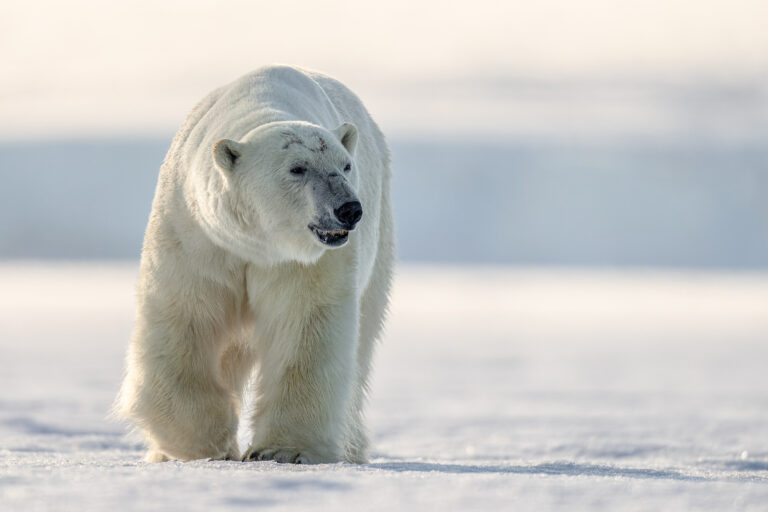
Pretending no interest, large male polar bear, Brasvell glacier, SvalbardThe large male polar bear is closing in further on the location of our RIB while seemingly pretending of having no interest. While looking and enjoying the sighting through the tele lens, it is easy to forget when time has come to leave.
Luckily our guide, a ranger and our driver, has started the engine of the RIB already.
Luckily our guide, a ranger and our driver, has started the engine of the RIB already.

Large male polar bear sniffing food, Brasvell glacier, SvalbardA different perspective (Now, the bear is so close that my lens cannot show the whole bear anymore) and a last look through the tele lens at the magnificent male polar bear. That one seems to be interested in getting even closer sniffing something tasty, we do not like his idea...and are escaping with our RIB.
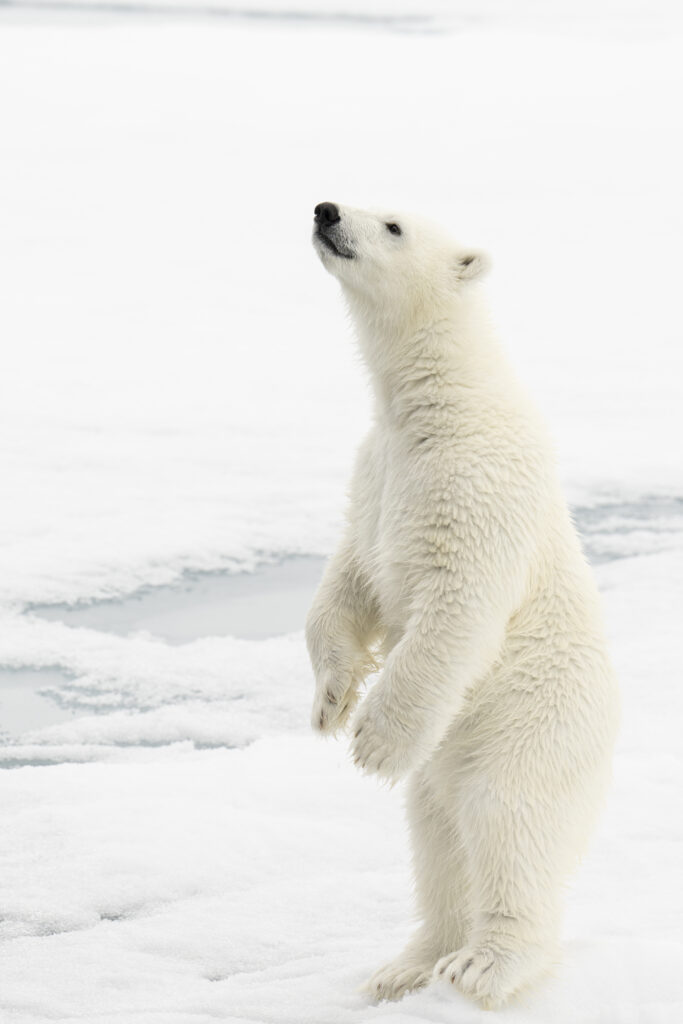
Curious polar bear cub, pack ice, north of Duvefjorden, SvalbardAfter having travelled with our small ship for about 30 hours from our last location, we are now very far north in the pack ice, north of Svalbard and Duvefjorden.
Having spent the night in the pack ice, we have been rewarded with the sighting of a female polar bear and her cub.
The polar bear cub apparently has seen something interesting, which seems to require a different perspektive.
Having spent the night in the pack ice, we have been rewarded with the sighting of a female polar bear and her cub.
The polar bear cub apparently has seen something interesting, which seems to require a different perspektive.
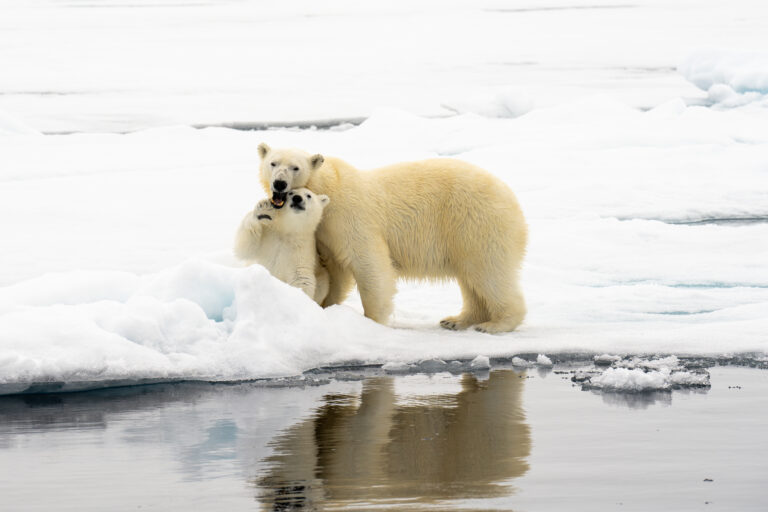
Playing with mom, pack ice, north of Duvefjorden, SvalbardPolar bear mom and her cub enjoying value time playing. Both were playing for a long time, at least an hour, along the water as well as in the water of the ice openings.
Is the yellow color of their fur correct? Yes, the yellow tint comes from the diatoms, which are living in the fur of those polar bears, that spend a lot of time swimming in the arctic water.
Because the polar bear cub hast't spent that much time in arctic waters yet, its fur appears more white.
Is the yellow color of their fur correct? Yes, the yellow tint comes from the diatoms, which are living in the fur of those polar bears, that spend a lot of time swimming in the arctic water.
Because the polar bear cub hast't spent that much time in arctic waters yet, its fur appears more white.
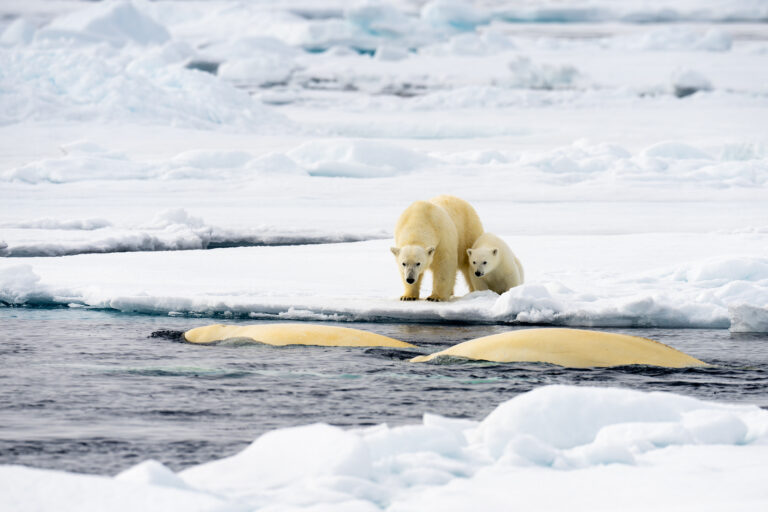
Whale watchers, female polar bear with cub watching Beluga whales, pack ice north of Duvefjorden, SvalbardPolar bear mom and her cub seem to be fascinated by a pod of Beluga whales, which is just passing by their location.
The polar bear mom certainly has something different in mind as well, however, she would not attack an adult Beluga but is probably checking, whether a grey-colored calf would be among the Belugas and within reach.
Once the polar bear decides to spend more time outside the water, e.g. during summer, the diatoms in its fur are dying and bleaching in the sunlight, changing the fur back from the yellowish color to an almost pure white.
The polar bear mom certainly has something different in mind as well, however, she would not attack an adult Beluga but is probably checking, whether a grey-colored calf would be among the Belugas and within reach.
Once the polar bear decides to spend more time outside the water, e.g. during summer, the diatoms in its fur are dying and bleaching in the sunlight, changing the fur back from the yellowish color to an almost pure white.
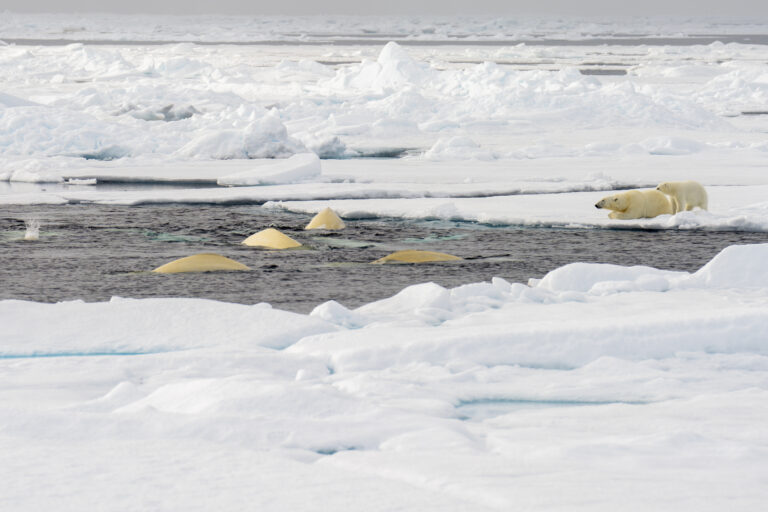
Polar bear mom and cub with pod of BelugasClose to an opening of the pack ice, a female polar bear and her cub have settled down to observe a pod of Beluga whales, which is enjoying the opening as a breathing hole.
Those diatoms are also living on the skin of the Belugas. Only towards summertime, during a process called molting, the Belugas rub their skin against rocks or sand to remove dead skin. And only then they do appear white for a short period of time, before the diatoms are moving in again...
Those diatoms are also living on the skin of the Belugas. Only towards summertime, during a process called molting, the Belugas rub their skin against rocks or sand to remove dead skin. And only then they do appear white for a short period of time, before the diatoms are moving in again...
